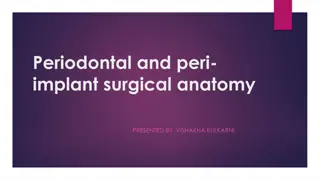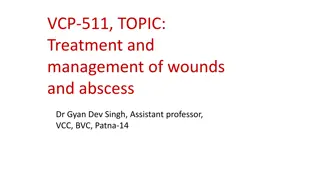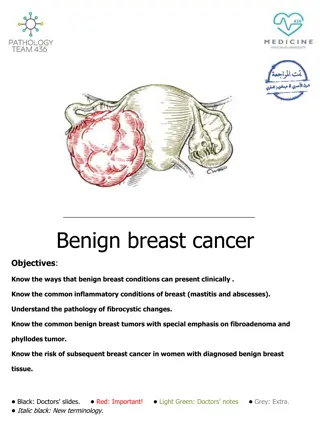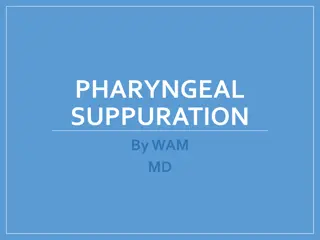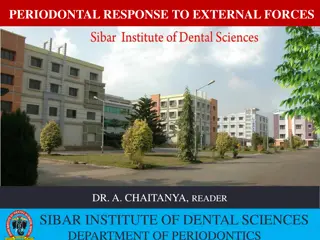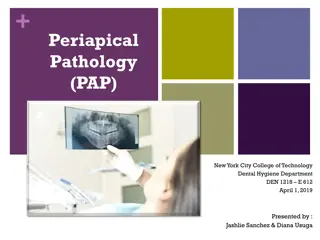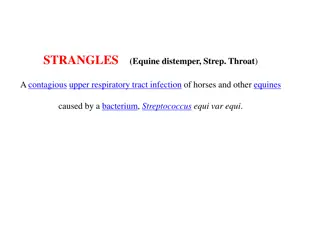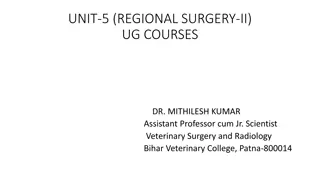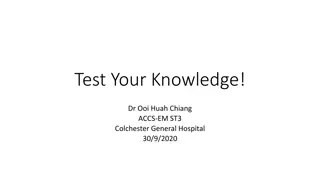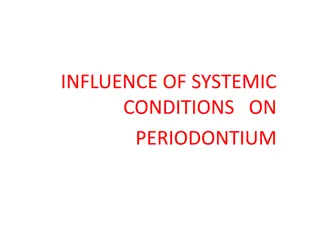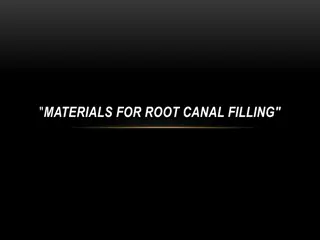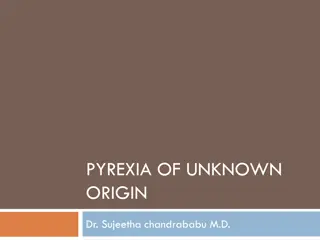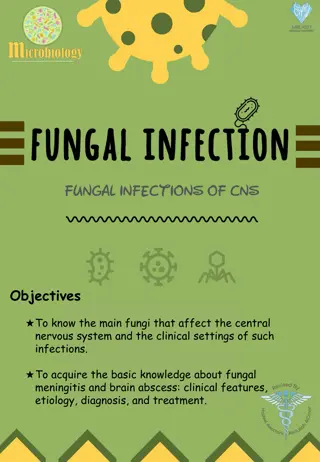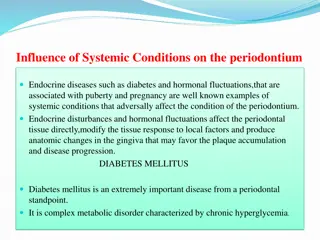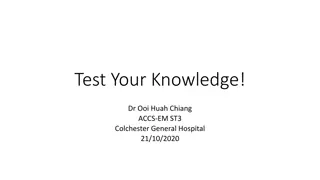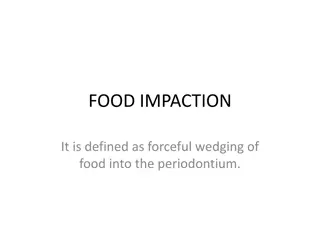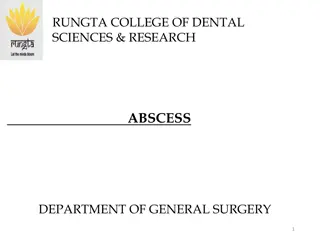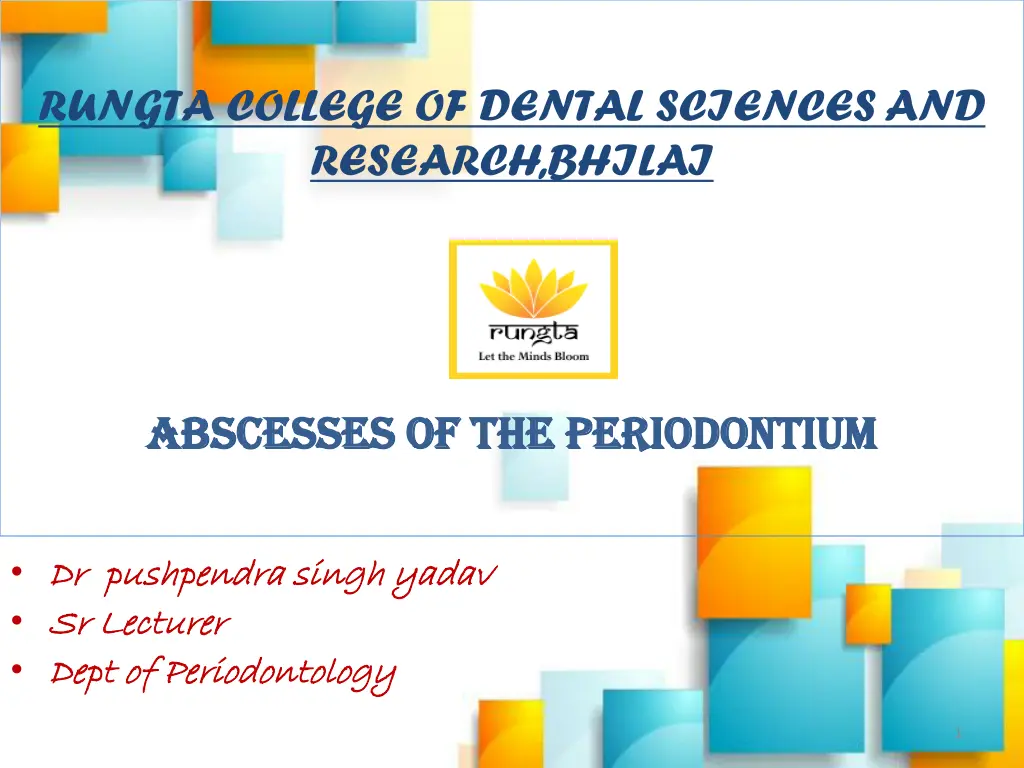
Dental Abscess: Types, Causes, and Treatment
Learn about different types of dental abscesses like gingival, pericoronal, and periodontal abscesses, their classification, etiology, diagnosis, and treatment. Understand the importance of identifying symptoms and seeking timely dental care to prevent complications.
Download Presentation

Please find below an Image/Link to download the presentation.
The content on the website is provided AS IS for your information and personal use only. It may not be sold, licensed, or shared on other websites without obtaining consent from the author. If you encounter any issues during the download, it is possible that the publisher has removed the file from their server.
You are allowed to download the files provided on this website for personal or commercial use, subject to the condition that they are used lawfully. All files are the property of their respective owners.
The content on the website is provided AS IS for your information and personal use only. It may not be sold, licensed, or shared on other websites without obtaining consent from the author.
E N D
Presentation Transcript
RUNGTA COLLEGE OF DENTAL SCIENCES AND RESEARCH,BHILAI Abscesses Abscesses of the of the periodontium periodontium Dr Dr pushpendra pushpendra singh Sr Sr Lecturer Lecturer Dept Dept of Periodontology of Periodontology singh yadav yadav 1
SPECIFIC LEARNING OBJECTIVES CORE AREAS DOMAIN CATEGORY Classification Etiology Pathogenesis and Histopathology Cognitive Cognitive Cognitive Desire to know Must to know Must to know Diagnosis Cognitive Must to know Differential diagnosis Cognitive Nice to know 2
CONTENT CONTENT Introduction Introduction Classification Classification Gingival Gingival Abscess Pericoronal Pericoronal Abscess Periodontal Abscess Periodontal Abscess Etiology Etiology Pathogenesis and Histopathology Pathogenesis and Histopathology Diagnosis Diagnosis Differential Differential Diagnosis Diagnosis Summary Summary References References Abscess Abscess 3
Introduction Introduction The periodontal abscess has also been defined as a with an expressed periodontal breakdown, occurring during a limited period of time and with easily detectable clinical symptoms, with a localised accumulation of pus, located within the gingival wall of the periodontal pocket. 4
Classification The 1999 International workshop for the classification of periodontal diseases organized by AAP has classified abscesses of the periodontium as Gingival Gingival abscess abscess Periodontal Periodontal abscess abscess Pericoronal Pericoronal abscess abscess. . 5
Gingival Abscess Gingival Abscess A gingival abscess is defined as a localized purulent infection that involves the marginal gingiva or interdental papilla Confined to only the gingival marginal tissues which are previously previously a a nondiseased nondiseased site site. 6
It is often an acute inflammatory response to the impaction of food material or a foreign body into the gingiva 7
In In its its early early stages stages, , it it appears appears as as a a red red swelling swelling with with a a smooth, smooth, shiny shiny surface surface. . Within Within 24 24 48 48 h, h, the the lesion lesion usually usually becomes becomes fluctuant fluctuant and and pointed pointed, , with with a a surface surface orifice orifice from from which which a a purulent purulent exudate exudate may may be be expressed expressed. . The The adjacent adjacent teeth teeth are are often often sensitive sensitive to to percussion percussion. . If If permitted permitted to to progress, progress, the the lesion lesion generally generally ruptures ruptures spontaneously spontaneously 8
Histopathology Histopathology The gingival abscess consists of a purulent focus in the connective tissue surrounded by a diffuse infiltration of polymorphonuclear leukocytes, edematous tissue, and vascular engorgement. 9
The surface epithelium has varying degrees of intracellular and extracellular edema, invasion by leukocytes, and sometimes ulceration. 10
Etiology Etiology Acute inflammatory gingival enlargement results from bacteria carried deep into the tissues when a foreign substance (e.g., toothbrush bristle, piece of apple core, lobster shell fragment) is forcefully embedded into the gingiva. 11
The lesion is confined to the gingiva and should not be confused with periodontal or lateral abscesses. 12
Pericoronal Pericoronal Abscess Abscess The pericoronal abscess associated with the crown of a partially erupted tooth is one of the complications of pericoronitis. It may spread posteriorly into the oropharyngeal areas and medially to the base of the tongue, making it difficult for the patient to swallow. 13
Periodontal (lateral) abscess Periodontal (lateral) abscess localized purulent inflammation in the periodontal tissues. It is also known as a lateral abscess or a parietal abscess. It is an infection located contiguous to the periodontal pocket and may result in destruction of the periodontal ligament and alveolar bone. 14
Classification of periodontal abscess Classification of periodontal abscess I. According to location I. According to location II. According to onset or course of lesion II. According to onset or course of lesion III. Depending on number III. Depending on number 16
I. According to location I. According to location 1. Abscess in the supporting periodontal tissues along the lateral aspect of the root. 2. Abscess in the soft tissue wall of the deep periodontal pocket. 17
II. According II. According to onset or course of lesion to onset or course of lesion 1. Acute Acute periodontal periodontal abscess abscess: : It appears as a bright red ovoid elevation of the gingiva, which may be relatively firm or pointed and soft. In most instances, pus may be expressed from the gingival margin by gentle digital pressure 18
It is accompanied by symptoms such as throbbing, radiating pain, sensitivity to percussion, tooth mobility, and, in some cases, lymphadenopathy and systemic effects such as fever and malaise. 19
2. Chronic Chronic periodontal periodontal abscess abscess: : It usually presents a sinus that opens onto the gingival mucosa somewhere along the root length. It is usually asymptomatic. However, the patient may complain of intermittent exudation, dull gnawing pain, slight elevation of the tooth, and a desire to bite down on and grind the tooth 20
Acute lesions often subside but persist in the chronic state, whereas chronic lesions may exist without being acute. Chronic lesions frequently undergo acute exacerbation. 21
III. Depending on number III. Depending on number 1. 1. Single Single periodontal periodontal abscess abscess: : They are usually related to local factors that contribute to the closure of the periodontal pocket. 2. Multiple Multiple periodontal periodontal abscess abscess: : They have been reported in diabetes mellitus and medically compromised patients. 22
Signs and Symptoms of Periodontal Signs and Symptoms of Periodontal Abscess Abscess Acute abscess Chronic abscess No pain or dull pain Localized inflammatory lesion Slight tooth elevation Intermittent exudation Fistulous tract often associated with a deep pocket Usually without systemic involvement Mild to severe discomfort Localized red, ovoid swelling Periodontal pocket Mobility Tooth elevation in socket Tenderness to percussion or biting Exudation Elevated temperaturea Regional lymphadenopathya 23
Etiology Etiology Periodontal abscesses have been associated either directly to periodontitis (periodontitis periodontitis related related abscess) abscess) or to sites without the prior existence of a periodontal pocket (non non- -periodontitis periodontitis related related abscess abscess). 24
Periodontitis Related Abscess Periodontitis Related Abscess The existence of tortuous pockets, with cul-de-sac that eventually becomes isolated, may favor the formation of abscess. The marginal closure of the periodontal pocket may lead to an extension of infection into the surrounding periodontal tissues due to the pressure of suppuration inside the closed pocket 25
The development of periodontal abscess in periodontitis may occur at different stages during the course of the infection as: an exacerbation of an untreated periodontitis, during periodontal therapy, in refractory periodontitis, or during periodontal maintenance. Also, fibrin secretions, leading to the local accumulation of pus, may favor the closure of gingival margin to the tooth surface 26
Changes in composition of the micro-flora, bacterial virulence, or in host defenses could also make the pocket lumen inefficient to drain the increased suppuration 27
Treatment with systemic antibiotics without subgingival debridement in patients with advanced periodontitis may also cause abscess formation. 28
Abscess can form due to inadequate scaling, which will allow calculus to remain in the deepest pocket area, while the resolution of the inflammation at the coronal pocket area will occlude the normal drainage and entrapment of the subgingival flora in the deepest part of the pocket. Also calculus might get dislodged and pushed into the soft tissue after procedures like scaling. 29
Nonperiodontitis Nonperiodontitis Related Abscess Related Abscess Impaction of foreign bodies, such as a toothbrush bristle, a piece of dental floss, orthodontic elastic, a dislodged cemental tear, food (such as fish bone) into the gingival tissue, and so on can result in abscess formation. Periodontal abscesses caused by foreign bodies, related with oral hygiene aids, have been named oral abscesses abscesses. . oral hygiene hygiene 31
Lateral perforation of the root during endodontic therapy and trauma to the tooth. 32
Local factors affecting morphology of roots such as cemental tears, external root resorption, invaginated tooth, and cracked tooth may predispose to periodontal abscess formation. 33
Pathogenesis Pathogenesis The entry of bacteria into the soft tissue The entry of bacteria into the soft tissue pocket wall pocket wall Inflammatory cells are then attracted by Inflammatory cells are then attracted by chemotactic factors released by the bacteria, chemotactic factors released by the bacteria, the concomitant inflammatory reaction leads the concomitant inflammatory reaction leads to to destruction of the connective tissues, destruction of the connective tissues, the encapsulation of the bacterial infection, the encapsulation of the bacterial infection, and the production of PUS and the production of PUS 34
Histopathology Histopathology Histologically intact neutrophils are found surrounding a central area of soft tissue debris and destroyed leukocytes. At a later stage, a pyogenic membrane composed of macrophages and neutrophils is organized. 35
An acute inflammatory reaction surrounds the purulent area, and the overlying epithelium exhibits intracellular and extracellular edema and invasion of leukocytes. Gram-negative bacteria may be seen invading the pocket epithelium and the altered connective tissue. 36
Diagnosis Diagnosis The diagnosis of the periodontal abscess requires correlation of the history, and clinical and radiographic findings. The dental history can provide information about previous periodontal treatments, endodontic therapy, and previous abscesses. 37
The suspected area should be carefully probed. Continuity of the lesion with the gingival margin serves as the clinical evidence that the abscess is periodontal. Other findings are ovoid swelling of the gingiva, pain, tooth mobility, tooth elevation, suppuration, either spontaneous or on digital pressure, and the presence of deep periodontal pockets. 38
Radiographically, it appears as a discrete area of radiolucency along the lateral aspect of the root. However, lesions in the soft tissue wall of a periodontal pocket are less likely to produce radiographic changes than those deep in the supporting tissues. Similarly, abscesses on the facial or lingual surfaces are obscured by the radiopacity of the root 39
Differential diagnosis Differential diagnosis Differentiation Between Gingival and Periodontal Abscess Differentiation Between Periapical and Periodontal Abscess 41
Summary Summary Periodontal abscesses are a common and painful dental emergency resulting from bacterial accumulation or foreign body impaction in periodontal pockets. They affect both patients with or without active periodontal disease and require prompt management acute and long-term management 42
REFERENCES Newman MG, Takei HH, Klokkevold PR, Carranza FA. Carranza s clinical periodontology, 10th ed. Saunders Elsevier; 2007. Lindhe J, Lang NP and Karring T. Clinical Periodontology and Implant Dentistry. 6th ed. Oxford (UK): Blackwell Publishing Ltd.; 2015. Newman MG, Takei HH, Klokkevold PR, Carranza FA. Carranza s clinical periodontology, 13th ed. Saunders Elsevier; 2018. 43
THANK YOU THANK YOU 44

